Aug 30—While my vehicle was lounging with the lions yesterday, I remember hearing on the radio that the other vehicle managed to find rhinos. Today I switched vehicles to be with the other students, who've already locked up four of the Big Five. Looking at my images from today, I see giraffe, elephant, leopard and the usual array of smaller things (birds, for example). No rhino. But I distinctly remember hearing the other vehicle say they were shooting rhino today! What the heck?
So I'm going to leave some space here for some rhino shots, none of which will be mine ;~):
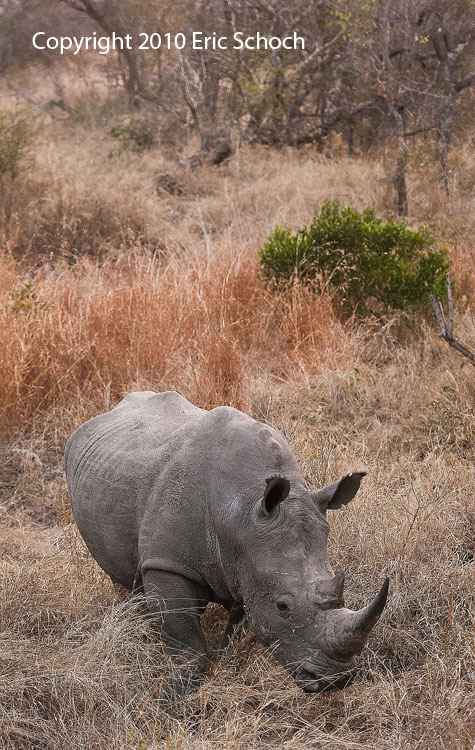
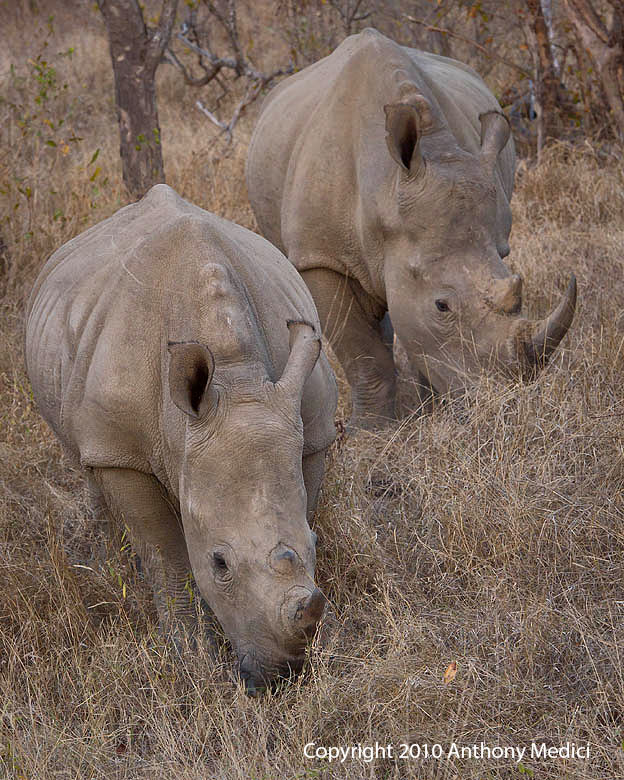
Looking at the student images, I've even figured out why I don't see any rhinos. They apparently walk back into the woods to hide from me when the other students are done with them:

Doh!
My day (and thus that of the students in my vehicle) consisted mostly of elephant and leopard. One thing I like to point out in wildlife photography is that everyone gets a little too enamored of the "portrait" shot. After all, you carried all those big lenses into the wild, you want close shots. So everyone tends to shoot leopards like this:
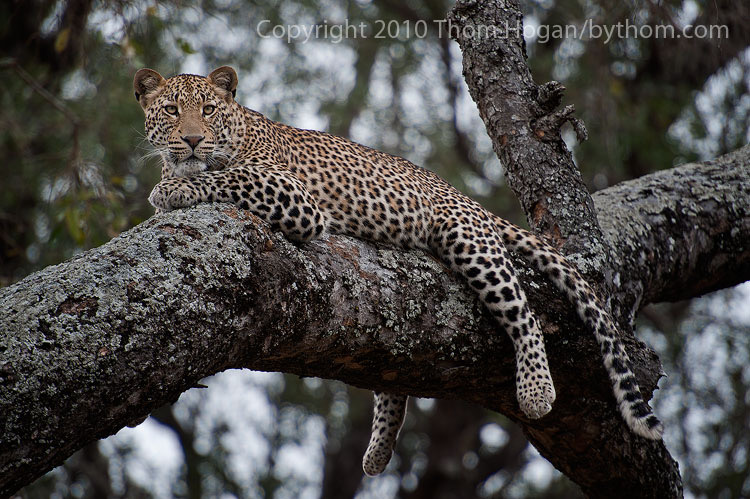
Nothing wrong with that shot (and note that you need to make sure you don't cut off dangling legs and tails), but it's been seen everywhere and really doesn't convey "leopard up in tree" very well in my opinion. It only gives you a small taste of the animal in the environment. The above shot is at 400mm, by the way. Back up to 140mm and you get something very different:
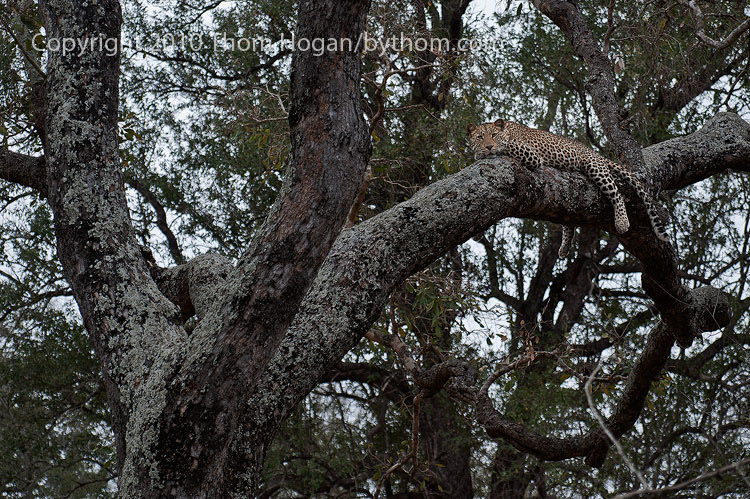
Now you get a better sense of how high up in the tree the leopard is, and how she might have gotten there. In some types of trees (not this particular one), you also start to see how camouflaged the leopard actually is to its prey when they walk by the tree.
Note that impala and many other of the leopard's prey are color blind--they see only black and white. So while we see the leopard in the tree pretty well due to the color mismatch, look what happens when the impala looks at the tree:
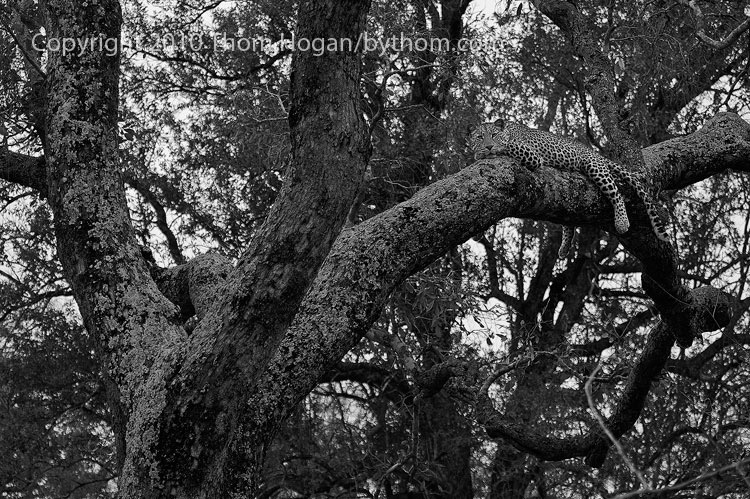
Notice how those leopard spots start to look more like the "spots" on the branch. It's actually more insidious than that. On the ground at the edge of the day, a leopard's spots are very hard to distinguish from background specular highlights when all you can see is black and white. (One reader caught the Web posting of recent article by the Economist, which relates to this.)
Tonight I'm going to set up the trap system I brought. It took Tony and I an hour or so during our lunch break to get the thing working right--apparently I had it set to some obscure triggering mode, and the menu system is as geeky and filled with crypticisms as it gets. What I've got is an IR-based system that consists of one transmitter (bottom of image, below), one receiver (line from transmitter points to it), a trigger box that can be set in a number of different ways, all connected to my D3 and SB-900.
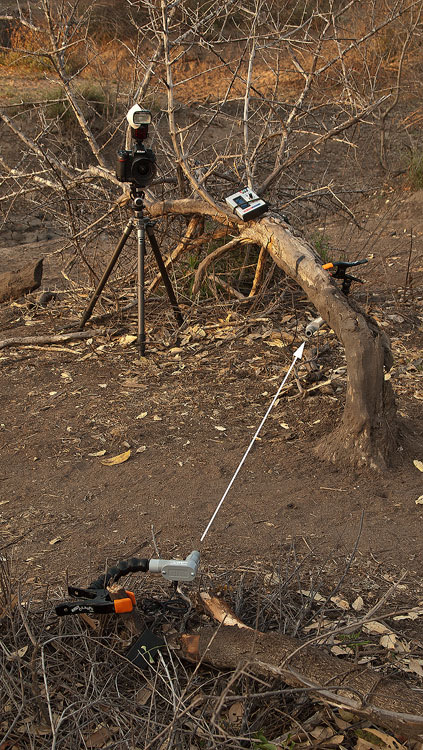
The battery-powered IR transmitter and receiver are held in place by Nasty Clamps, the trigger is bungied to the tree, and I'm taking a bit of a chance with my D3 on the tripod like that. Normally I'd be clamping it somewhere where the hyena can't get to it (they'll chew on anything). As you should be able to tell, this particular area has a game trail going right through where the IR beam is, and the game is pretty much restricted to going through that area due to the downed trees. To the right side is one of the sole sources of water in this area, which is why there's a game trail here in the first place. If an animal interrupts the beam, the trigger box is set (after our hour-long trouble-shooting session during lunch break) to immediately fire the camera. I should point out that you can set the trigger in many different ways (on interruption, after interruption, with various delays, firing different items in sequence, and so on), and that you can connect to the camera in many different ways (direct wire as I did here, or Pocket Wizard as I usually do). Likewise, you can get a laser beam version instead of IR. The laser beam is better for large gaps (the IR works to about 6' well), but the animals can also see it quite easily and might avoid it.
So we're off to dinner, but my camera is still working...
